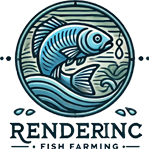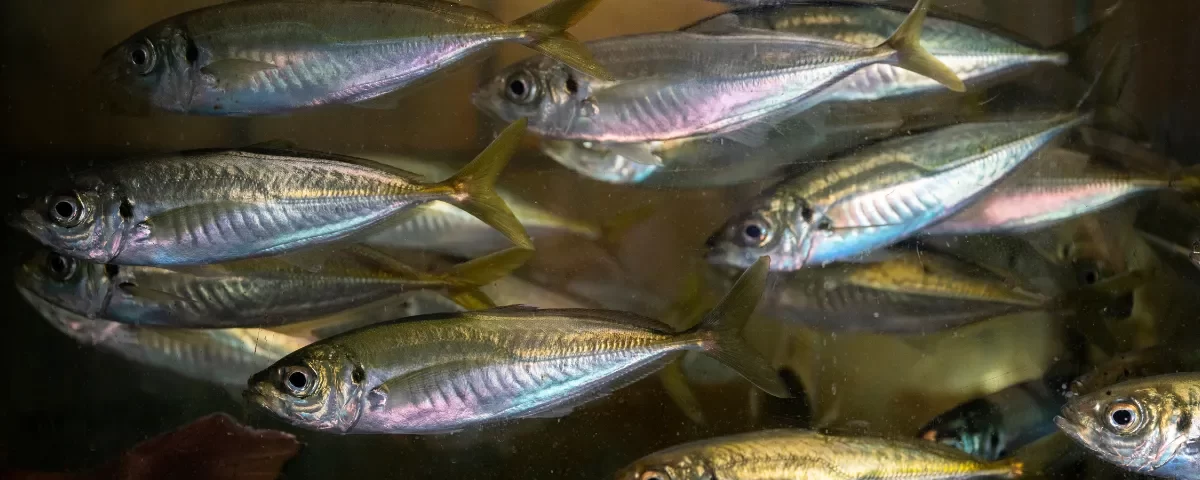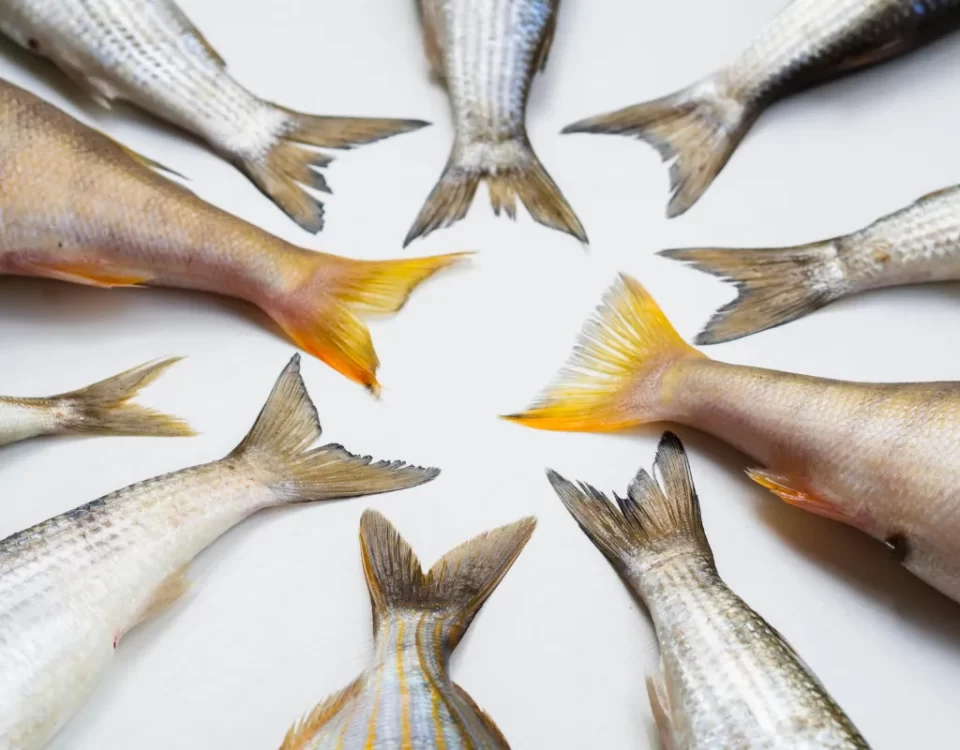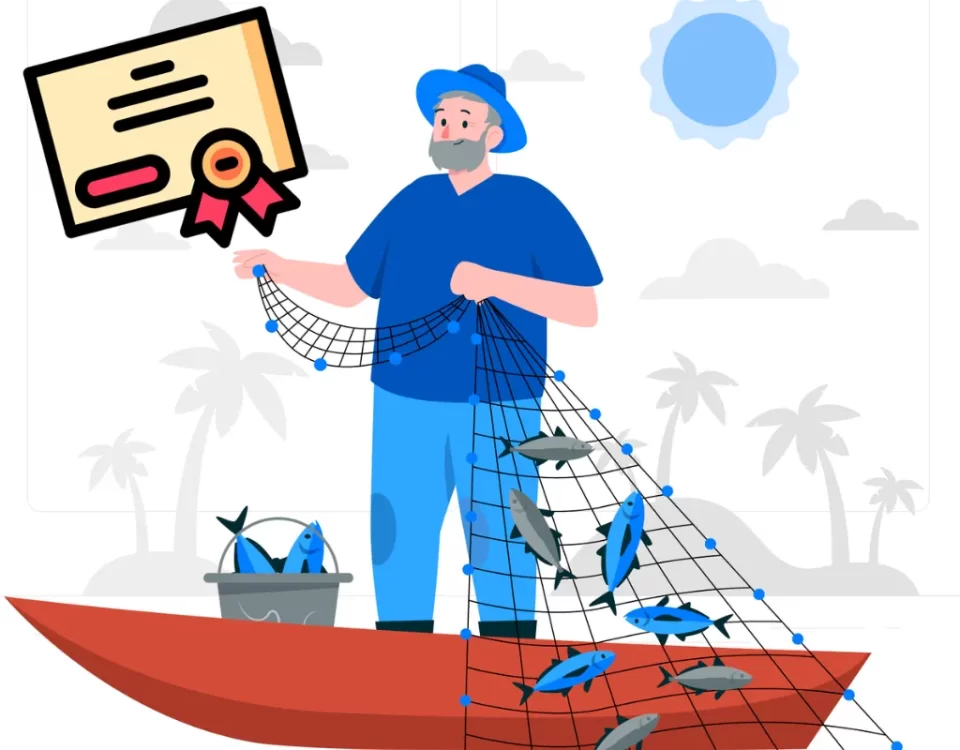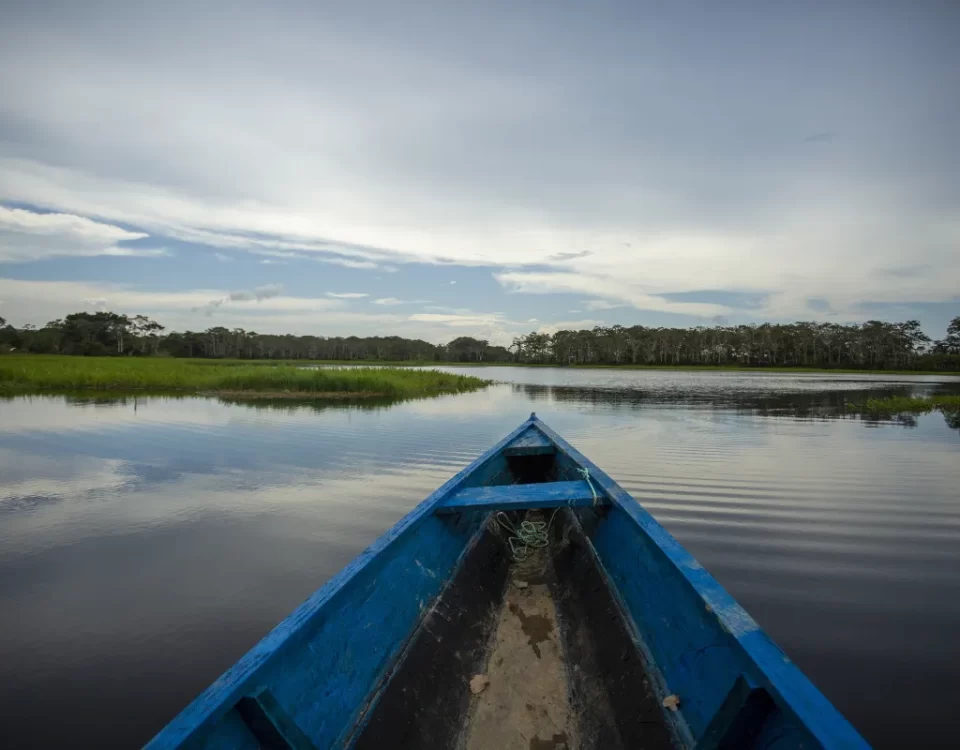How to Minimize Water Usage in Fish Farming

How to Create a Sustainable Fish Farm with Limited Resources
setembro 7, 2024
How to Reduce Mortality Rates in Aquaculture
setembro 8, 2024Importance of Water Conservation in Fish Farming
In the realm of fish farming, the significance of water conservation cannot be overstated. Water serves as the lifeblood of aquaculture, acting as the primary habitat for fish and a medium through which essential nutrients are delivered. Sustainable water management practices are imperative to ensure the longevity and success of fish farming operations worldwide.
The effects of excessive water usage in fish farming can be detrimental on multiple fronts. Not only does it deplete local water resources, but it also contributes to pollution through the discharge of excess nutrients and chemicals into surrounding ecosystems. Additionally, high water usage can strain aquatic habitats and disrupt the delicate balance of aquatic ecosystems, posing risks to both farmed fish and wild populations.
Statistics reveal the staggering water consumption rates within the fish farming industry. According to recent studies, the average water usage in intensive aquaculture systems can reach as high as 3,500 to 5,000 liters per kilogram of fish produced. These numbers underscore the pressing need for water conservation strategies to minimize the industry’s environmental impact and promote long-term sustainability.
Efficient Water Management Techniques
Introduction to Efficient Water Management Practices in Fish Farming
In the realm of fish farming, where sustainability is paramount, employing efficient water management techniques is crucial. Water is a precious resource, and in aquaculture, its judicious use can lead to significant benefits. By embracing practices that minimize water wastage and promote conservation, fish farmers can not only reduce their environmental impact but also enhance the overall health and productivity of their fish stocks.
Use of Recirculating Aquaculture Systems (RAS) to Minimize Water Waste
One of the most groundbreaking developments in the field of fish farming is the implementation of recirculating aquaculture systems (RAS). These systems are designed to recycle and filter water within the fish tanks, drastically reducing the need for constant water changes. By continuously treating and reusing the same water, RAS not only minimize water wastage but also create a more stable and controlled environment for the fish. This innovative approach not only conserves water but also promotes efficient nutrient utilization and waste removal, leading to improved growth rates and healthier fish.
Importance of Monitoring Water Quality and Levels in Fish Tanks
In the intricate ecosystem of a fish farm, monitoring water quality and levels within the fish tanks is of utmost importance. Regular water testing for parameters such as dissolved oxygen, ammonia levels, and pH is essential to ensure that the aquatic environment remains optimal for fish health. Maintaining appropriate water levels not only prevents overcrowding but also helps in oxygenation and circulation, crucial for the well-being of the fish. By implementing robust monitoring protocols and promptly addressing any deviations, fish farmers can safeguard their stocks against stress, disease, and mortality.
Through the strategic adoption of efficient water management techniques such as RAS and diligent monitoring of water quality, fish farmers can embark on a journey towards sustainable and <strong>responsible aquaculture. By recognizing the intrinsic value of water in fish farming and taking proactive measures to minimize wastage and optimize usage, farmers can not only protect their livelihoods but also contribute to the preservation of our precious water resources for generations to come.
Sustainable Feeding Practices
In fish farming, feeding practices play a crucial role in determining the amount of water consumed and the overall sustainability of the operation. Overfeeding can lead to excess nutrients in the water, contributing to nutrient pollution and imbalanced ecosystems within fish tanks. It is essential for fish farmers to strike a balance between providing enough feed for the fish to grow and minimizing waste that can negatively impact water quality.
Impact of Feeding Practices on Water Consumption
The impact of feeding practices on water consumption in fish farming cannot be overstated. An excessive amount of feed can lead to uneaten pellets sinking to the bottom of the tank, where they decompose and release nutrients into the water. This not only wastes valuable resources but also contributes to eutrophication, leading to algae blooms and oxygen depletion. By monitoring feeding amounts closely and adjusting them based on fish appetite and growth rates, farmers can significantly reduce water wastage.
Strategies to Reduce Overfeeding and Nutrient Pollution
To minimize overfeeding and nutrient pollution in fish tanks, farmers can implement several strategies. One effective approach is to use automatic feeders that dispense feed at regular intervals in controlled amounts. This helps prevent the fish from being fed excessively and reduces the likelihood of uneaten feed accumulating in the tank. Additionally, incorporating floating feed pellets that remain on the surface gives farmers better visibility of how much feed the fish are consuming, allowing for adjustments as needed.
Introduction to Innovative Feed Formulations
Innovative feed formulations are being developed to reduce the water required for digestion and nutrient absorption by the fish. For example, incorporating highly digestible ingredients into fish feed can improve nutrient utilization and reduce the overall volume of waste produced. Some feed formulations also include prebiotics and probiotics to enhance gut health in fish, leading to better digestion efficiency and lower water consumption. By exploring these innovative feed options, fish farmers can promote sustainable practices while optimizing fish growth and health.
Water Filtration and Purification Systems
In the realm of fish farming, where water conservation is paramount, implementing efficient water filtration and purification systems is crucial. Various methods are utilized in the aquaculture industry to maintain water quality and reduce waste, ultimately promoting a sustainable environment for aquatic life.
Overview of Different Water Filtration Systems Used in Fish Farming
Fish farms commonly employ mechanical filters, biological filters, and chemical filters to ensure the cleanliness and clarity of water. Mechanical filters such as sand filters and screen filters effectively remove solid particles and debris from the water, preventing clogging and maintaining optimal flow rates. Biological filters, including biofilters and biofilm reactors, play a vital role in breaking down ammonia and nitrites excreted by fish, converting them into less harmful nitrates through the process of nitrification. Additionally, chemical filters such as activated carbon are utilized to adsorb organic compounds and impurities, further enhancing water quality.
Discussing the Role of Biofilters in Maintaining Water Quality and Reducing Waste
Among the various water filtration systems used in fish farming, biofilters stand out for their ability to foster a biologically active environment that promotes the growth of beneficial bacteria. These bacteria work tirelessly to convert toxic ammonia and nitrites into less harmful nitrates, ultimately improving water quality and creating a healthier habitat for fish. By harnessing the power of natural biological processes, biofilters not only aid in waste reduction but also contribute to the overall sustainability of the fish farming operation.
Importance of Regular Maintenance of Filtration Systems for Optimal Water Conservation
Ensuring the efficiency and effectiveness of water filtration systems in fish farming requires diligent maintenance practices. Regular cleaning of mechanical filters to prevent blockages, monitoring and adjusting biofilter parameters for optimal bacteria growth, and replacing spent chemical filter media are essential tasks that must be carried out to uphold water quality and promote water conservation. Neglecting the maintenance of filtration systems can lead to inefficiencies, poor water quality, and increased water consumption, undermining the sustainability goals of the fish farm.
By embracing a comprehensive approach to water filtration and purification, fish farmers can actively contribute to the conservation of this precious resource while ensuring the well-being of their aquatic inhabitants. Through the careful selection and maintenance of filtration systems, the quest for sustainable water use in fish farming can be achieved with grace and efficacy.
Utilizing Natural Resources
Introduction to Utilizing Natural Resources to Minimize Water Usage in Fish Farming
In the realm of fish farming, the concept of utilizing natural resources has gained traction as a sustainable approach to minimize water usage and promote ecological balance. Employing the inherent benefits of nature’s offerings can not only reduce water consumption but also enhance the overall health and productivity of fish farms. By leveraging natural resources strategically, fish farmers can create a harmonious ecosystem that supports both the aquatic inhabitants and the environment in which they thrive.
Benefits of Incorporating Natural Ecosystems like Wetlands and Mangroves in Aquaculture
The integration of natural ecosystems such as wetlands and mangroves in aquaculture settings brings a multitude of advantages. These biodiverse habitats serve as natural filtration systems, purifying water and maintaining optimal water quality for fish farming operations. Wetlands, with their capacity to absorb excess nutrients and pollutants, act as a buffer against water contamination, ensuring a healthier environment for aquatic species. Similarly, mangroves provide critical habitat for juvenile fish, acting as nurseries that support the growth and development of fish populations.
Case Studies of Successful Integration of Natural Resources in Sustainable Fish Farming Practices
Numerous case studies showcase the successful integration of natural resources in sustainable fish farming practices. For instance, a fish farm in Vietnam implemented a wetland system adjacent to their ponds, effectively reducing water usage by utilizing the wetland vegetation to naturally filter and recycle water. This innovative approach not only lowered operational costs but also enhanced the quality of the farm’s ecosystem. Another example is a mangrove restoration project in Indonesia, where fish farmers worked in tandem with conservationists to establish mangrove areas around their aquaculture operations. This initiative not only minimized water consumption but also provided additional income streams through ecotourism and sustainable fishing practices.
By observing these successful cases, fish farmers can glean valuable insights on how to harness the power of natural resources to optimize water usage, promote ecological sustainability, and foster a thriving fish farming industry. Committing to the integration of natural ecosystems in aquaculture practices can lead to a more resilient, efficient, and environmentally conscious approach to fish farming.
Government Regulations and Incentives
In the realm of fish farming, government regulations play a pivotal role in water usage management. These regulations are put in place to ensure that aquaculture practices are conducted in an environmentally sustainable manner. For instance, government bodies may restrict the amount of water that can be extracted from natural sources for fish farming or impose limits on wastewater discharge to safeguard water quality.
Overview of government regulations on water usage in fish farming
Governmental agencies such as the Environmental Protection Agency (EPA) and the Department of Agriculture commonly oversee regulations related to water usage in fish farming. These regulations set standards for water quality, water extraction, and waste management to mitigate the impact of aquaculture activities on the ecosystem. Fish farmers are required to adhere to these regulations to maintain the sustainability of their operations.
Discussing incentives and programs available for fish farmers to promote water conservation
To encourage water conservation practices in fish farming, various incentives and programs are offered by government entities and non-profit organizations. Fish farmers can benefit from grants, subsidies, and technical assistance to implement water-efficient technologies and practices on their farms. Additionally, certification programs like the Aquaculture Stewardship Council (ASC) promote sustainable aquaculture practices and provide market access to environmentally conscious fish farmers.
Importance of compliance with environmental laws and standards in sustainable aquaculture
Compliance with environmental laws and standards is crucial for the long-term viability of fish farming operations. By following regulations on water usage and waste management, fish farmers contribute to maintaining the health of aquatic ecosystems and safeguarding water resources for future generations. Embracing sustainable aquaculture practices not only helps fish farmers meet legal requirements but also enhances their reputation as stewards of the environment, fostering consumer trust and support for their products.
Case Studies and Success Stories
When it comes to minimizing water usage in fish farming, real-life examples serve as powerful inspirations for others in the industry. Let’s delve into some noteworthy case studies that demonstrate innovative approaches to reducing water consumption while maintaining a thriving aquatic environment.
Successful Water Usage Reduction at Aquafarm X
Aquafarm X, located in the coastal region of Country Y, has gained recognition for its proactive measures in conserving water resources. By implementing a state-of-the-art recirculating aquaculture system (RAS), Aquafarm X has significantly decreased its freshwater intake and minimized wasted water discharge. Through meticulous monitoring and efficient filtration processes, this farm has managed to cut down water usage by an impressive 30% over the past year.
Insights from Industry Experts on Sustainable Water Management
In an exclusive interview with Dr. Marine Biologist, a renowned expert in aquatic ecosystems, we uncover best practices for ensuring sustainable water management in fish farming. Dr. Biologist emphasizes the importance of maintaining optimal water quality through proper aeration and filtration techniques to support healthy fish growth. By cultivating a symbiotic relationship between fish and beneficial microorganisms, farms can achieve a harmonious balance that reduces water wastage while promoting overall ecosystem health.
Economic and Environmental Benefits of Water Conservation in Fish Farming
The benefits of minimizing water consumption in fish farming extend beyond ecological preservation to tangible economic advantages. Farms that adopt water-efficient practices not only reduce operating costs associated with freshwater usage but also enhance their competitive edge in the market. Additionally, by demonstrating a commitment to environmental sustainability, these farms appeal to conscientious consumers seeking ethically produced seafood, thus fostering a positive brand image and attracting a growing market segment focused on supporting eco-friendly practices.
Embracing a paradigm shift towards resource conservation and innovative water management strategies, the fish farming industry is poised to create a ripple effect of positive change that reverberates through both economic prosperity and environmental well-being.
Recap of the importance of minimizing water usage in fish farming
In the realm of sustainable aquaculture, the significance of minimizing water usage in fish farming cannot be overstated. Water is a finite resource essential for life, and the conservation of this precious resource is crucial for the longevity and viability of the aquaculture industry. By reducing water consumption, fish farmers not only contribute to environmental preservation but also enhance the efficiency and productivity of their operations.
Summary of key strategies and techniques discussed in the article
Throughout this discourse, we have delved into a myriad of strategies and techniques aimed at minimizing water usage in fish farming. From the implementation of recirculating aquaculture systems (RAS) to the utilization of water-saving technologies such as aerators and biofilters, the possibilities for water conservation in aquaculture are manifold. Additionally, adopting proper feeding protocols, monitoring water quality, and maintaining optimal stocking densities are fundamental practices that can significantly reduce water wastage in fish farming operations.
Call to action for fish farmers to adopt sustainable water management practices in their operations
As custodians of the aquatic environment, it is incumbent upon fish farmers to heed the clarion call for sustainable water management practices. Embracing innovative and eco-friendly approaches to water usage not only fosters long-term profitability but also ensures the preservation of our natural resources for future generations. I implore all aquaculturists to commit to responsible stewardship by implementing water-saving measures, investing in water-efficient technologies, and prioritizing environmental sustainability in their fish farming endeavors. Let us unite in our quest to safeguard the invaluable gift of water and nurture a thriving aquatic ecosystem for the prosperity of all.

Michael Rivers is an experienced aquaculture enthusiast with over a decade of hands-on knowledge in fish farming and sustainable aquatic systems. Passionate about promoting eco-friendly practices, he shares his expertise on fish breeding, water management, and the latest advancements in aquaculture technology. Through his blog, Michael aims to help both beginners and seasoned fish farmers achieve success in their ventures while contributing to the growth of sustainable food production.
